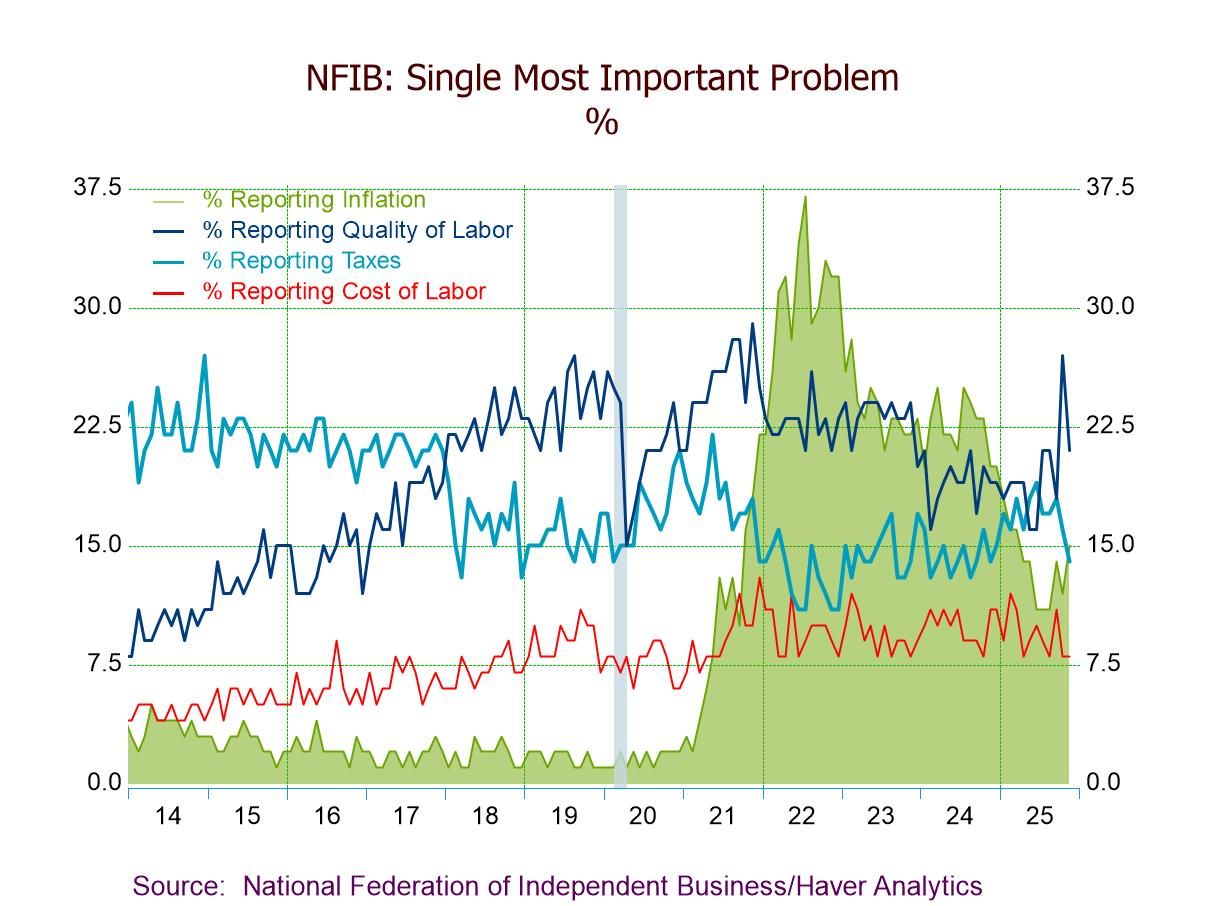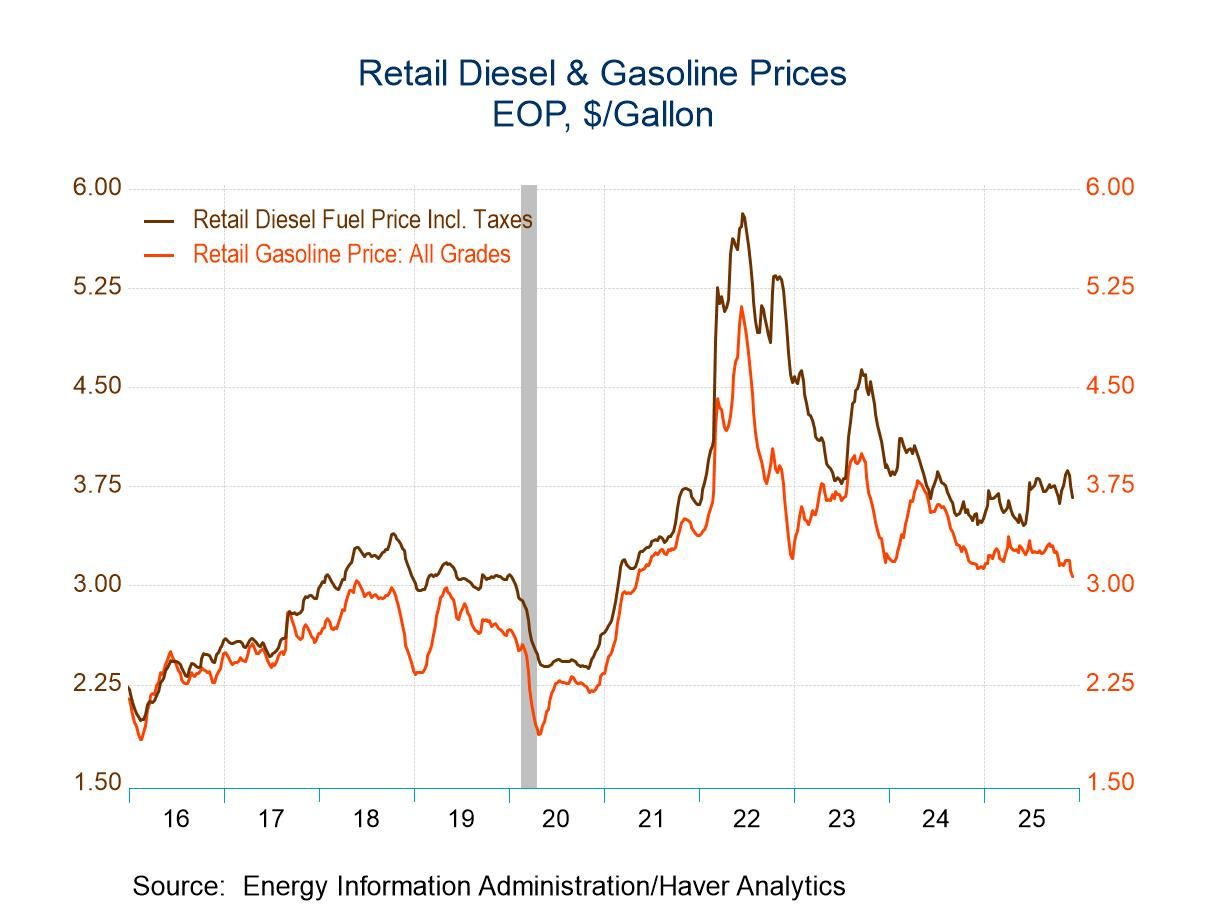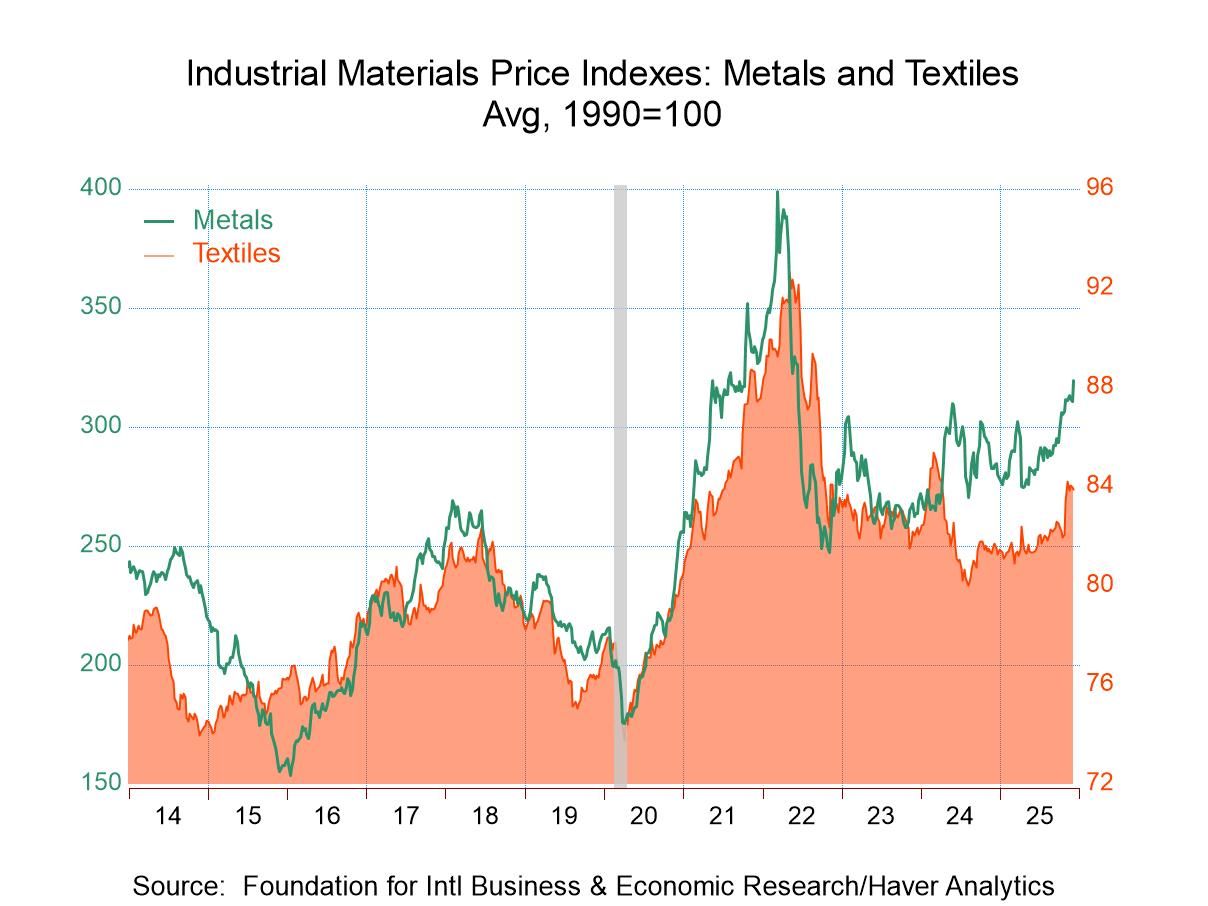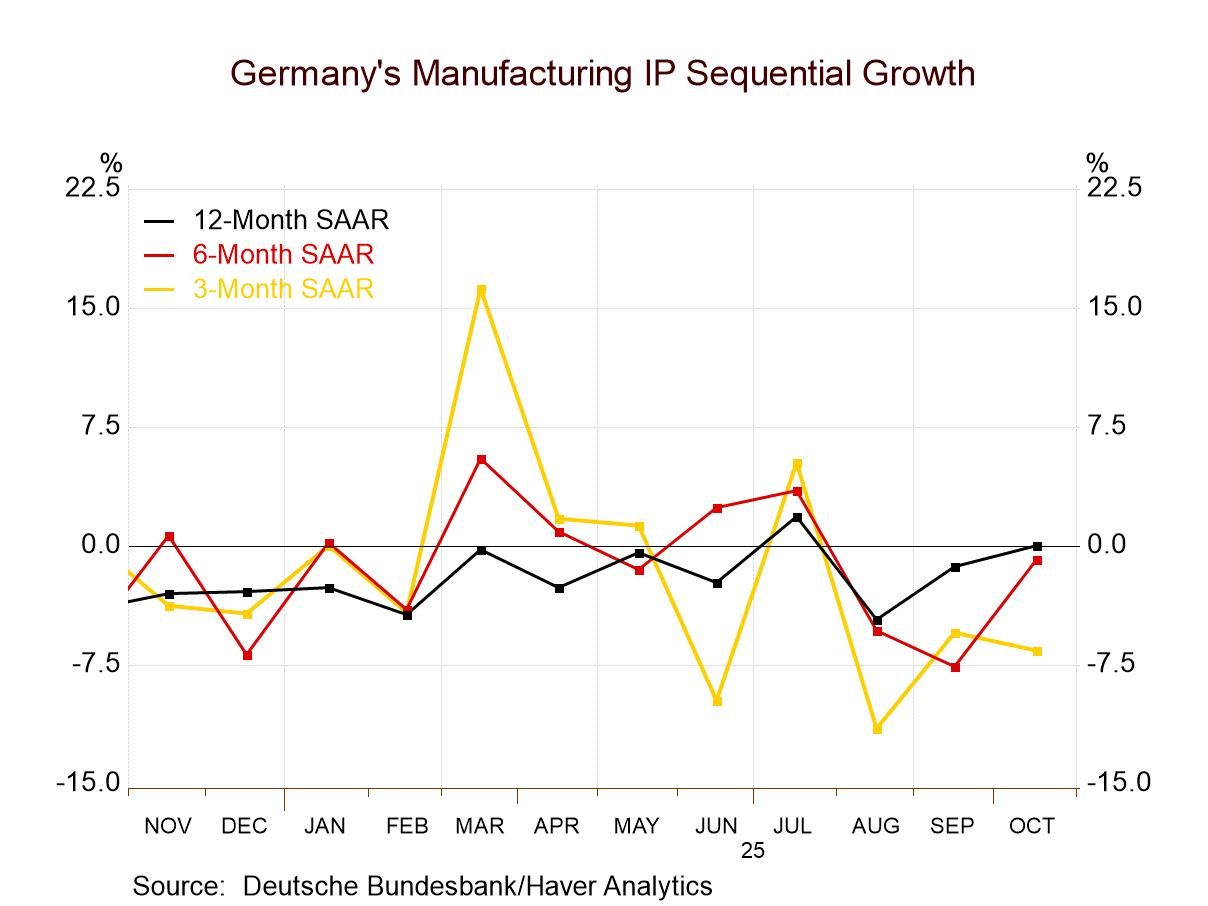U.S. Housing Starts Dip in April but Remain Elevated
Summary
- Single-family starts ease while multi-family improve.
- Starts and permits were revised down sharply.
- Housing construction activity appears to be holding at an elevated range.


Housing starts edged down by 0.2% (14.6% y/y) in April to 1.724 million units from 1.728 million in March. The March figure was revised down sharply from 1.793 million. The Action Economics Forecast Survey expected 1.765 million starts in April, which signaled that economists did not think the surprisingly high reported March figure would hold. The downward revision and slight decline recast the starts figures, suggesting they remained at an elevated range in April.
The pattern of housing construction activity seems to be shifting toward multifamily. Initially after the pandemic lockdowns, single-family starts and permits jumped, but have remained in a range for the past two years. Meanwhile, starts of multifamily dwellings, which are about half the size of single-family units, have been rising steadily. In April, starts of single-family units fell 7.3% (3.7% y/y) to 1.100 million following a dip to 1.187 in March. Multi-family housing starts jumped 15.3% (40.5% y/y) to 624,000 in April, which was a 26-year high.
By region, housing starts remain volatile and mixed. After skyrocketing in March, the Northeast gave back a third of that gain (23.2% m/m) in April to 182,000. Starts in the West rose 3.4% (11.6% y/y) to 432,000. Starts in the Midwest dropped by 22.0% (2.2% y/y) to 184,000 in April. In the South, housing starts increased 10.6% (18.4% y/y) to 926,000 units. The South is the only region showing a noticeable upward trend.
Building permits declined by 3.2% (3.1% y/y) to 1.819 million from 1.879 million in March. Permits to build single-family homes declined 4.5% (-3.7% y/y) in April to 1.110 million units. Permits to build multi-family edged down by 1.0% (15.6% y/y) to 709,000.
The housing starts and permits figures can be found in Haver's USECON database. The expectations figure is contained in the AS1REPNA database.


Peter D'Antonio
AuthorMore in Author Profile »Peter started working for Haver Analytics in 2016. He worked for nearly 30 years as an Economist on Wall Street, most recently as the Head of US Economic Forecasting at Citigroup, where he advised the trading and sales businesses in the Capital Markets. He built an extensive Excel system, which he used to forecast all major high-frequency statistics and a longer-term macroeconomic outlook. Peter also advised key clients, including hedge funds, pension funds, asset managers, Fortune 500 corporations, governments, and central banks, on US economic developments and markets. He wrote over 1,000 articles for Citigroup publications. In recent years, Peter shifted his career focus to teaching. He teaches Economics and Business at the Molloy College School of Business in Rockville Centre, NY. He developed Molloy’s Economics Major and Minor and created many of the courses. Peter has written numerous peer-reviewed journal articles that focus on the accuracy and interpretation of economic data. He has also taught at the NYU Stern School of Business. Peter was awarded the New York Forecasters Club Forecast Prize for most accurate economic forecast in 2007, 2018, and 2020. Peter D’Antonio earned his BA in Economics from Princeton University and his MA and PhD from the University of Pennsylvania, where he specialized in Macroeconomics and Finance.






